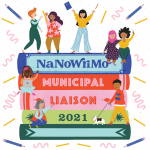These are the statistical tests and results from our Marketing Research project.
This is the final report from my marketing research class. We presented findings about the perceived brand association between the Pittsburgh Steelers and Saint Vincent College. Seen below is the executive summary.
Executive Summary
I. Problem Definition
A question as to whether or not the Pittsburgh Steelers Training Camp has a positive affect on Saint Vincent College was addressed. More specifically, agnostic research was conducted to determine if brand affiliation with a popular icon, such as the Steelers, benefits Saint Vincent College in high school students’ college selection process.
II. Research Design and Methodology
A one-way focus group among thirteen SVC freshmen was conducted to discover what topics about the association between SVC and the Steelers mattered to the students, and which topics do not matter. Also, the research team interviewed an expert, Archabbot Douglas Nowicki, on both his mixed reviews (strengths and weaknesses) of training camp, as well as his views on existing opportunities and threats of the relationship on a larger region scale. Surveys were completed by a variety of SVC students and general public at mall intercept points in a fairly random selection process. Data was entered into SPSS to perform statistical analysis in testing our hypotheses, centering around the effects of Steelers Training Camp on SVC and if more should be done for SVC to benefit from the relationship. Eight statistical tests were performed, focusing on how camp makes people aware of SVC, appeal to potential students, is good marketing for SVC, and whether more publicity of camp is needed.
III. Findings
The focus group did not provide much information that did not already fit our hypotheses – which is that students are neutral on considering SVC because of the Steelers association. The depth interview provided us with the Archabbot’s view that media coverage of SVC should be increased, but probably will not be due to being a rural school. However, he would like to increase the signage of SVC logos around camp for camera shots. The statistical tests proved the following with 95% confidence:
1. Forty percent of people feel that Camp makes SVC appealing to potential students. Therefore, Camp does have some positive effect for SVC. [Single Test of Proportions]
2. Forty percent of respondents feel that SVC should do more to publicize its relationship with the Steelers. [Single Test of Proportions]
3. There were no significant differences between students and non-students attitudes, towards the Steelers and SVC relation. [2 Sample Proportions & 2 Sample Means t-Test]
4. Respondents were generally neutral about whether or not SVC should do more to publicize its relationship with the Steelers. [Single Sample Test of Means] Therefore, more publicity may not necessarily overall benefit nor hinder SVC.
5. Among age groups, no significant differences existed among attitudes toward awareness, appeal, good marketing, and the need to publicize more. [One-Way ANOVA].
6. If we can get more people to find Camp appealing to potential students through various activities, more importance will be given to the “Steelers Training Camp” in the college selection process. [Regression Analysis]
For the Marketing Research project, I was the focus group moderator, as I also was when I took Research for Public Relations and Advertising. Shown here is my moderator's outline.
Opening5 minutes |
Today we’ll be discussing your thoughts and opinions about the relationship between Steelers Training Camp and SVC. Basically, we want to know whether holding Camp here is beneficial to the college by means of brand association. § In a discussion like this, there are no wrong answers, just differing points of view. § We are interested in both positive and negative comments, and, in fact, sometimes the negative comments are the most helpful. I want to stress that your remarks here tonight are strictly confidential. § The videotaping is exclusively for research purposes, and the only persons viewing the film will be the author or the research, the clients, and me, the moderator.
Finally, some points about procedure: § We’ll proceed informally, on a first name basis. § My role is just to ask questions and listen. I plan to move the discussion along through about 10 questions, but feel free to speak out if something occurs to you. We aren’t rushed. § I’ve hardly glanced through the book and have no opinion myself. This is your show.
Let’s begin with brief introductions around the table. Tell us your name and one fact about yourself that you feel most identifies who you are? |
Intro10 minutes |
1) What are some of the characteristics about Saint Vincent College that made you decide to attend? |
Transition15‑20 min |
2) How much of an influence was the fact that Steelers Camp was held here have on your decision to look further into coming to SVC? |
|
5 minutes |
BREAK (optional) |
KEY15 minutes |
2) How do you think we can attract prospective students using the Steelers icon in a presentation? |
KEY10 minutes |
3) What do you think are some of the positive aspects of having Camp here? What are some of the negatives? |
KEY10 minutes |
4) If you could change anything about the Steelers affiliation with Saint Vincent College what would it be and why?
|
ENDING10 minutes |
5) Overall, do you think Saint Vincent should continue hold Camp here? |
SUMMARY5 minutes |
6) Is this an adequate summary? |
FINAL2 minutes |
7) Have we missed anything? |
The following is the introductory material from research I completed with a group in my consumer behavior course. The study was titled "Hovering Above the Fast Forward Button: Exposure Control and Pleasant Advertisments."
Download the entire study here. ![]()
Abstract
Our research team looks at the theory pertaining to exposure control. By examining exposure control coupled with persuasion, we have created a truly unique and simple study. While examining exposure control and pleasantness, we arrived at the hypothesis that exposure control may be less likely for more pleasant advertisements while at the same time are more likely to persuade.
Our methods consisted of a control group and a test group. Each group was presented with a series of four advertisements. The control group watched the television commercials twice, straight through. The test group had the ability to fast forward through any and/or all commercials while watching the reel a second time. This manipulation and control allowed for out methods to be simple yet yield data that could be easily analyzed. Test subjects were college aged students and were randomly assigned to groups. The television commercials were determined prior to the experiment to represent a mix of pleasant and unpleasant advertisements.
Our hypotheses were confirmed in three out of four cases. From this we are able to conclude that advertisements that are more pleasant will not be as prone to exposure control, thus increasing their persuasion.
Background Theory and Hypothesis Development
Background information
The purpose of this research is to test the hypothesis that exposure control is less likely for pleasant ads. We will define pleasant as ads that people find likable and enjoyable. This research strikes a cord with all of those in business. Exposure control, whether present in pleasant or unpleasant ads, is a problem that advertisers and communicators must overcome. To be retained, their message must be heard, seen or witnessed. This research is relevant in the scope of college students and their television commercial habits. Areas for further study are discussed in greater detail later in this document.
Theory
According to the text and studies done by Batra & Stayman in 1990, Brown, Homer & Inman in 1998, MacKenzie, Lutz & Belch in 1986 and Mitchell & Olson in 1981, pleasant ads are more persuasive than neutral or unpleasant ads. These researchers accept that the cause of this finding is that positive feelings toward the ad transfer to the product. Wilson’s research suggests a different explanation and that is what our research examines (Kardes, 138). Additional research also helped to form our hypotheses: “Greenwald and Leavitt (1984) suggest that highly involved viewers are likely to engage in greater message elaboration and critical evaluation of advertisement and to experience less effective response” (Brown, 116). Our research attempts to look at the gaps in these theories, the aspects that other scholars have stated should be examined.






